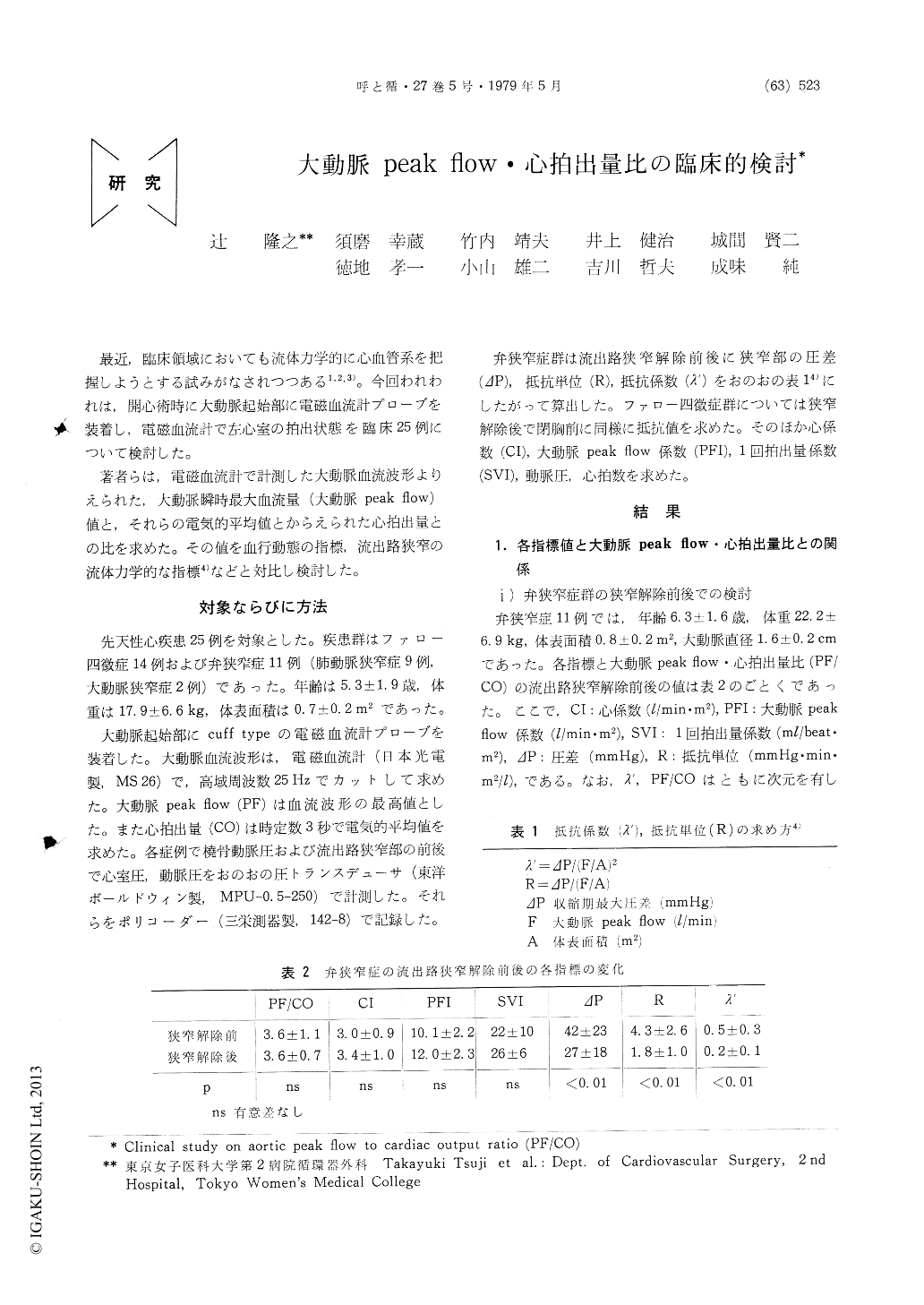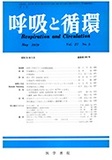Japanese
English
- 有料閲覧
- Abstract 文献概要
- 1ページ目 Look Inside
最近,臨床領域においても流体力学的に心血管系を把握しようとする試みがなされつつある1,2,3)。今回われわれは,開心術時に大動脈起始部に電磁血流計プローブを装着し,電磁血流計で左心室の拍出状態を臨床25例について検討した。
著者らは,電磁血流計で計測した大動脈血流波形よりえられた,大動脈瞬時最大血流量(大動脈peak flow)値と,それらの電気的平均値とからえられた心拍出量との比を求めた。その値を血行動態の指標,流出路狭窄の流体力学的な指標4)などと対比し検討した。
Aortic peak flow to cardiac output ratio (PF/ CO) was measured in 25 patients with an elec-tromagnetic flowmeter during cardiac surgery. The patients were 14 children with tetralogy of Fallot and 11 children with congenital pulmonary stenosis or aortic stenosis. During cardiac opera-tion, a cuff type flow probe was placed on the aortic root. Aortic peak flow, cardiac output, ventricular and arterial pressures were recorded with a multichannel recorder before and after the intracardiac repair.
PF/CO was measured 36 times and revealed to be 3.6±0.8. The average value of PF/CO after the repair of valvular stenosis was 3.6, which was approximately the same to the average value of PF/CO before the repair of valvular stenosis. The value was 3.5 after the repair of tetralogy of Fallot. Aortic peak flow showed about 3.6 times of cardiac output. It was suggested that PF/CO might represent an index related to ven-tricular function during ejection phase.

Copyright © 1979, Igaku-Shoin Ltd. All rights reserved.


